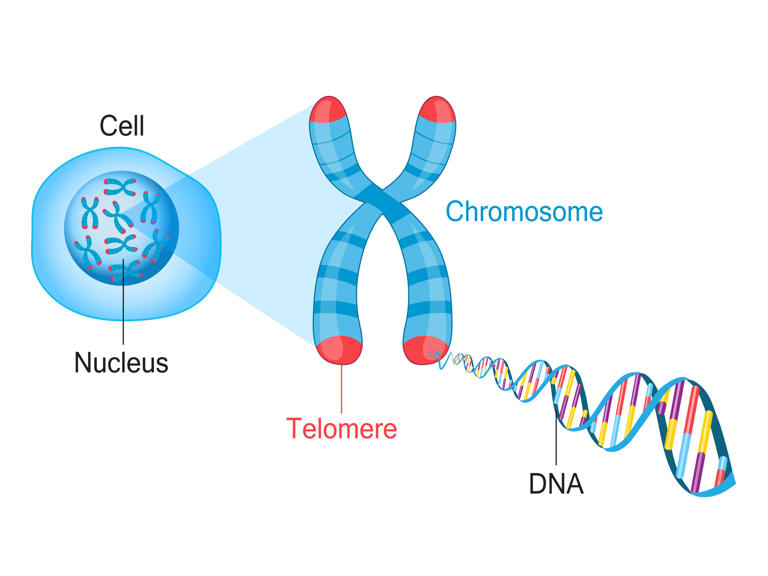Jess Thomson - Newsweek
New insights into the medical mysteries behind dementia have been revealed this week, with two studies identifying drivers of the brain-degenerating condition.
One study, released on September 11 in the journal General Psychiatry, shows that the shortening of little caps on the end of chromosomes may be linked to increased dementia risk. Another, published in the journal JAMA on September 12, reveals that spending more time sedentary, such as sitting down, may also increase the risk.
These studies may help scientists to further understand the mechanisms behind what causes dementia to develop, and therefore how to stop it.
How Aging Is Linked to Dementia
Dementia is a term for the symptoms of a decline in brain function, as a result of damage to or changes in the brain. Alzheimer's disease is a form of dementia, caused by an abnormal build-up of two types of protein: amyloid and tau. One of the major drivers of dementia development is age, as it is much more common in the elderly.
This may be somewhat explained by the findings of the General Psychiatry paper, which discovered that dementia risk increases with the shortening of the telomeres. These telomeres are little caps on the ends of chromosomes that prevent the functional genes from being lost during replication. As a person ages, their telomeres become shorter and shorter as a result of many years of cell division and chromosome replication.
According to the paper, data from UK Biobank—a large biomedical database—reveals that of patients between the ages of 37 and 73, those with shorter telomeres in their leucocytes (a type of white blood cell) were 14 percent more likely to be diagnosed with dementia than those with the longest telomeres, and 28 percent more likely to be diagnosed with Alzheimer's disease.
"We found that LTL [leucocyte telomere length] acts as an aging biomarker associated with the risk of dementia," the authors wrote. "Furthermore, we also observed linear associations of LTL with total and regional brain structure. These findings highlight telomere length as a potential biomarker of brain health."
"Since LTL is largely inherited, individuals who inherit shorter LTL may be predisposed to dementia, making LTL an appealing predictive biomarker for dementia. In addition, shorter LTL is widely regarded as an indicator of poorer neuropsychological condition, so measurement of LTL might be considered as an option offered to the public to motivate healthy lifestyle choices in the general population."
Stock illustration showing where the telomere is. ISTOCK / GETTY IMAGES PLUS© ISTOCK / GETTY IMAGES PLUS
How Sedentary Behavior is Linked to Dementia
The JAMA paper reveals that another driver of dementia may be a sedentary lifestyle.
Also using UK Biobank data, as well as accelerometer data from study participants, the researchers found that people aged over 60 who spend more than 10 hours a day engaging in sedentary behaviors, such as sitting, are at a higher risk of dementia compared with those who are sedentary for less time.
"The link between sedentary behavior was nonlinear, so that at lower amounts of sitting time, there was no significant increase in risk," study author David Raichlen, professor of biological sciences and anthropology at the USC Dornsife College of Letters, Arts and Sciences, told Newsweek. "After about 10 hours per day of sedentary behavior, risks increased significantly. Ten hours per day of sedentary behavior was associated with an 8 percent increase in risk of dementia and 12 hours per day was associated with a 63 percent increase in risk of dementia."
Stock image of an elderly woman sitting. ISTOCK / GETTY IMAGES PLUS© ISTOCK / GETTY IMAGES PLUS
Sedentary behavior was defined by the authors as any waking behavior characterized by "a low energy expenditure while in a sitting or reclining posture," Raichlen said.
"We were surprised to find that the risk of dementia begins to rapidly increase after 10 hours spent sedentary each day, regardless of how the sedentary time was accumulated," study author Gene Alexander, professor of psychology and psychiatry at the Evelyn F. McKnight Brain Institute at the University of Arizona and Arizona Alzheimer's Disease Research Center, said in a statement.
"This suggests that it is the total time spent sedentary that drove the relationship between sedentary behavior and dementia risk, but importantly lower levels of sedentary behavior, up to around 10 hours, were not associated with increased risk."
They also found that even if this sedentary time is broken up by periods of activity, it's only the total time spent sitting that appears to have an impact on dementia risk.
"Many of us are familiar with the common advice to break up long periods of sitting by getting up every 30 minutes or so to stand or walk around," Raichlen said in the statement. "We wanted to see if those types of patterns are associated with dementia risk. We found that once you take into account the total time spent sedentary, the length of individual sedentary periods didn't really matter."
The exact reason why sedentary lifestyles may be linked to dementia risk is unclear, the authors said, with more research being required to fully understand the mechanisms behind this association.
"Our study was not focused on mechanisms but it is possible that reductions in cerebral blood flow or links between sedentary behavior and cardiometabolic disease factors may play a role in increased risk for dementia. Future work will focus on identifying these mechanisms," Raichlen said.
The link between telomere length and dementia also needs more research, the General Psychiatry authors explain, including looking at telomere length in other cell types, and how dementia risk changes with changes in telomere length.
"Several limitations must be taken into account," the authors wrote. "LTL was measured only once at baseline in nearly 470,000 participants. Based on the results of the current study, we were unable to identify whether changes in LTL impact the chances of dementia development.
"Dementia diagnoses were obtained from electronic health records only, so some dementia cases may not have been fully covered; likewise, we inevitably omitted some undiagnosed dementia and less severe dementia cases as they might not have been mentioned in the electronic health records," they said. "Finally, given the nature of an observational study design, conclusions of causality should be made with caution."

